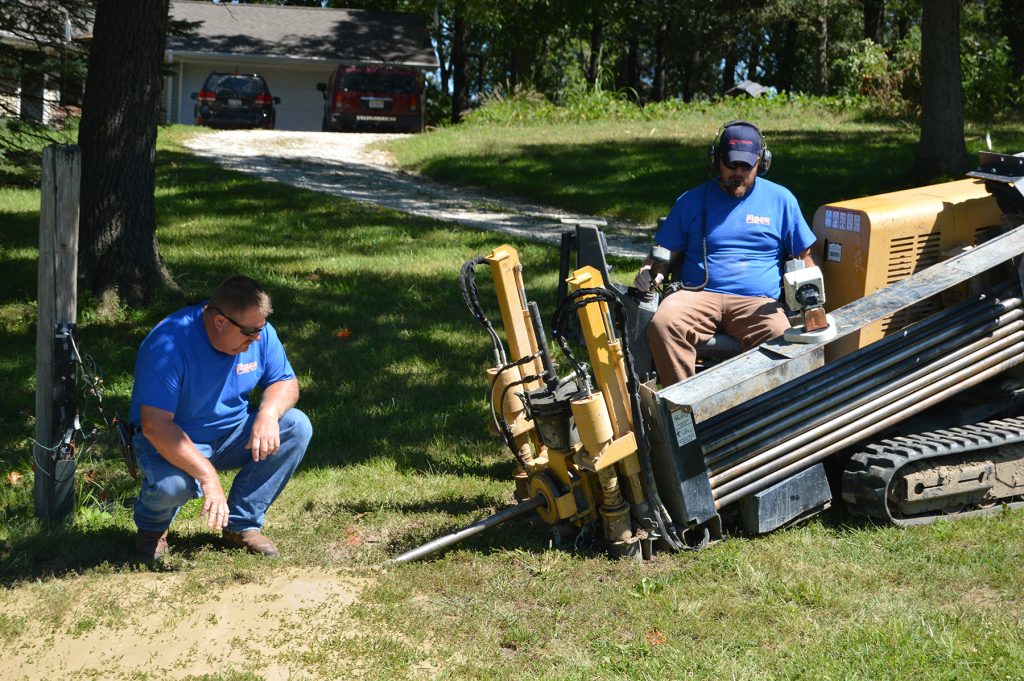Boring


Directional Boring is a specialized drilling technique designed for installing cables, pipes and utility lines underground with minimal disturbance to the surface area above. This technique uses a directional boring machine to steer steel pipes along a predetermined bore path. Directional drill operators can avoid obstacles such as buildings, waterways, roads, utility lines and landscaping by guiding a drill head over, under and around them.
Directional boring is often used when trenching or other methods are not practical or cost-effective in residential or commercial zones where obstacles are numerous and space is tight. It is imperative that the boring machine operator has accurate information about any existing utilities or other hidden obstacles before drilling begins.
The directional boring process consists of three basic steps.
- First, the operator drills a pilot hole that follows the preplanned path.
- Second, the hole is made wider by passing a larger cutting tool, called a Back Reamer, back through the pilot hole.
- Third, the machine operator guides the desired pipe or conduit into the enlarged hole.
All of this is done with the help of drilling fluid, which helps to remove loose cuttings, stabilize the bore hole, cool the cutting head and lubricate the pipe or conduit to make insertion easier.

 Directional Boring is a specialized drilling technique designed for installing cables, pipes and utility lines underground with minimal disturbance to the surface area above. This technique uses a directional boring machine to steer steel pipes along a predetermined bore path. Directional drill operators can avoid obstacles such as buildings, waterways, roads, utility lines and landscaping by guiding a drill head over, under and around them.
Directional boring is often used when trenching or other methods are not practical or cost-effective in residential or commercial zones where obstacles are numerous and space is tight. It is imperative that the boring machine operator has accurate information about any existing utilities or other hidden obstacles before drilling begins.
The directional boring process consists of three basic steps.
Directional Boring is a specialized drilling technique designed for installing cables, pipes and utility lines underground with minimal disturbance to the surface area above. This technique uses a directional boring machine to steer steel pipes along a predetermined bore path. Directional drill operators can avoid obstacles such as buildings, waterways, roads, utility lines and landscaping by guiding a drill head over, under and around them.
Directional boring is often used when trenching or other methods are not practical or cost-effective in residential or commercial zones where obstacles are numerous and space is tight. It is imperative that the boring machine operator has accurate information about any existing utilities or other hidden obstacles before drilling begins.
The directional boring process consists of three basic steps.




